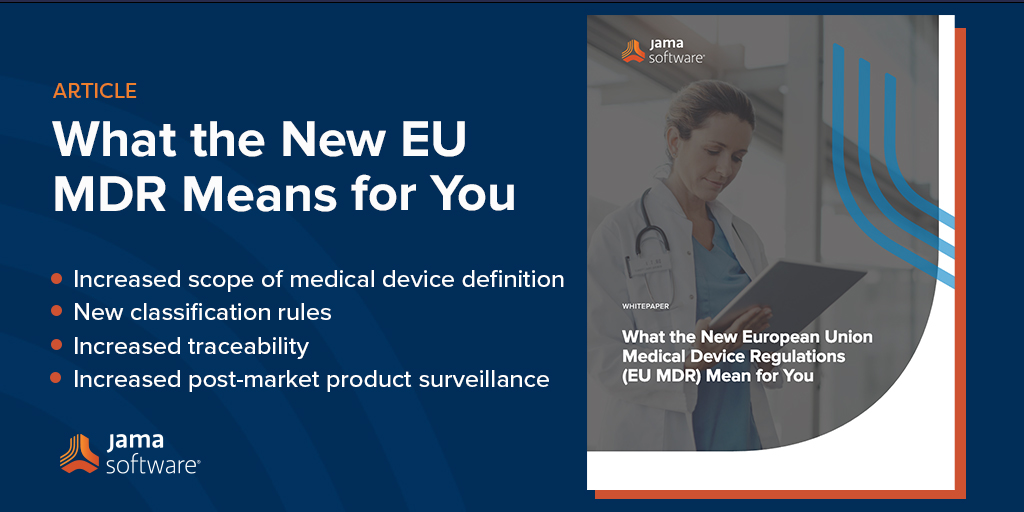
As medical device technologies have rapidly advanced in recent years, regulations governing definitions, testing, and post-market activities have struggled to keep up. The pace of change and adoption of these technologies has made it difficult for governments and agencies to create the kind of inclusive and expansive rules that will ensure safety.
In response to this expanding market, the European Union released new guidance governing medical devices. With the release of Medical Device Regulation (MDR) 2017/745/EU, in 2017, the EU has issued the first updated regulations in more than 20 years. The new Medical Device Regulation (MDR) 2017/745/EU addresses software as a medical device [SaMD], as well as other products. It also places stringent requirements for compliance with post-market activities and post-market surveillance. While enforcement of these new regulations was scheduled to begin in May 2020, it was postponed until May 2021 due to the COVID-19 pandemic. What do these new regulations mean for the medical device industry? Experts from Beanstock Ventures explain what you need to know for EU MDR compliance.
RELATED POST: Ensuring FDA Compliance for Your Digital Health Solution
Key Takeaways:
- The EU Medical Devices Regulation (MDR) has replaced the EU Medical Device Directive effective 26 May 2021.
- The EU MDR is greatly expanded to cover more devices, including Software as Medical Device, implantable devices, contact lenses, and many digital health technologies. It also promotes a lifecycle approach to regulation.
- EU MDR requires improved device traceability by introduction of a unique identification system, or UDI (see section 05), for medical devices approved for use in the EU. To keep track of devices through every lifecycle stage, a device identifier (UDI) will be assigned, and all production series will be marked with a production identifier.
EU Medical Devices Regulation (MDR), adopted by the European Parliament and Council as REGULATION (EU) 2017/745 OF THE EUROPEAN PARLIAMENT AND OF THE COUNCIL of 5 April 2017, has replaced the former EU Medical Device Directive (MDD) and went into effect 26 May 2021. After this date, the MDR is applicable for all medical devices sold (developed or imported) in the European Union.
The most important changes in the EU MDR include:
- Increased scope of medical device definition;
- New classification rules (including Rule 11 that specifically addresses software);
- Increased scope of general safety and performance requirements, technical documentation, and clinical data and evaluation requirements;
- Introduction of traceability and identification system and database; and
- Increased post-market product surveillance.
To learn more about EU MDR, download the full whitepaper.
- With Hacks on the Rise, Manufacturers Hone Their Cybersecurity Smarts - January 23, 2025
- Jama Connect® Stands Alone as the Leader in Requirements Management Software - January 21, 2025
- FDA Issues Comprehensive Draft Guidance for Developers of Artificial Intelligence-Enabled Medical Devices - January 15, 2025